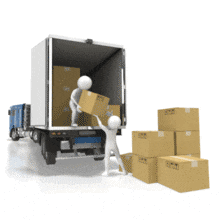A strategy is needed to implement logistics outsourcing properly as there are many benefits to it. For e-commerce players, here are 7 key steps:
It's not
always easy for e-commerce operators to manage the logistical aspects of their
business from inventory management to distribution and returns. Best Household
Goods Movers are becoming one of the most important e-commerce operators
nowadays. Many such companies turn to outsourcing their logistics to enhance
quality and knowledge, reduce costs throughout the supply chain, or free up
time. A Relocation Expert can help you to know about this much
more efficiently. In this article, to maximize the benefits of outsourcing,
we'll take you through seven steps to help you get over this hurdle.
Step 1:
Define your logistics needs
Logistics
outsourcing including forecasts is the key to successful e-commerce management.
The outsourcing solutions you can implement are based on your needs. A 3PL
provider the management of your e-commerce logistics and fulfillment, from
stock to deliveries, order preparation, packaging, and customer returns
management, e-commerce logistics outsourcing involves delegating.
Step 2:
Choose a trusted logistics partner
Naturally,
you'll need to choose between the various logistics providers before signing a
contract once you’ve defined your requirements. It’s particularly an important
decision.
A different
service and a unique skill set is offered by each logistics. Ask them about
customized solutions tailored to your company's profile by taking out time to
study their proposals. Cutting-edge technologies, like Cubi Scan, enable one to
precisely measure each item of merchandise to calculate its volume, optimize
stock management achieve storage cost reduction, attention to the environment,
etc, these special criteria may come into play in this.
Step 3:
Connect the logistics solutions to your IT system
Integrating
the logistics solutions should also be considered. Not all logistics service
providers supply plug-and-play software that can be quickly and easily
integrated into your IT system to access order status management functions and
track deliveries or returns.
With the
technology solutions proposed, check the compatibility of IT interfaces (CMS,
WMS, OMS, and marketplaces). For example, WMS is complemented by OMS. It offers
better order management and optimization performance than WMS if you want to
accelerate your international expansion. Also, it’s a good idea to use it.
Step 4:
Entrust your goods to the logistics provider
To the
warehouses of the e-commerce logistics provider you've chosen, you’ll need to
send your goods. Even before you start receiving orders, this step is
essential.
This task
will be assigned to a carrier. The proposed collection times and the services
specific to each provider choose the right provider, assess and compare not
only costs but also the location of each carrier's hubs and the associated
transportation time. Make sure this option is available if your goods are very
fragile or large or require special care (medicines, cold, etc.).
Step 5:
Delegate intralogistics to ensure compliance with current standards
To improve
the organization of goods and information, intralogistics is a series of
processes designed for it. This can be used to define shipping and storage
standards and to receive raw materials, which are complex processes. It’s
possible to delegate them to your logistics provider to comply with the various
regulations your company needs to meet and is even advisable.
Step 6:
Define shipping and delivery specifications
Shipping and
delivery are areas that mustn’t be overlooked to improve your customer
experience. You can deal directly with a carrier as an e-commerce operator.
However, you can also choose a logistics provider or subcontractor for these
tasks.
In terms of
cost, the benefits of this second solution can be measured. Because providers
have greater agility and are better able to negotiate advantageous rates with
carriers have relationships with lots of companies and work with very large
volumes of goods.
Step 7:
Monitor your e-commerce activity daily
You can
maintain control over inventory management while using an outsourced logistics provider, and for this, you need to be able to monitor your activity in real-time
throughout the supply chain. If there is a temporary fall in activity, or
conversely, a sharp increase or a peak season (Black Friday, season, sales,
Christmas, etc.), good flow monitoring enables you to adjust stock levels. To
maintain a good customer experience, avoiding stock-outs is the best option.







